
Heat Pump Radiators
Choosing Radiators For a Heat Pump
The best radiator for a heat pump, be that an air source heat pump or a ground source, is an open question. Is there a supremely better radiator for a heat pump that is the better choice over all other radiators? The simple answer is no.
Designer radiators, like standard radiators, are designed to emit heat. However, designer radiators have a tendency to do this in a more aesthetically pleasing way, or by being efficient with material use, to create a modern radiator that delivers excellent heat output for its size. The latter point is an important point to consider when the best radiator for air source heat pump (most common) is the question.
The size of the modern radiator to be used with the heat pump will be important because the water temperature produced by the heat pumps is lower than that of standard boilers, often 35–55 °C instead of 70–80 °C. Therefore, your feature radiator choice needs to be optimised for low-temperature heating.
The radiator for the heat pump (air source heat pump or ground source) then needs to be an efficient radiator, utilising a large surface area for emitting heat and a suitable size, as we will require more radiator material to achieve the desired heat. As a rule of thumb a designer radiator for a heat pump usually needs to be 1.5 –3 times bigger; exactly the same applies to a standard radiator.
The simplest and most common method for calculating the best radiator for your air source heat pump is considering your heat pump’s flow temperature and your room heat loss. At Feature Radiators, we do that for you and have experience of specifying literally 1000s of radiators for heat pumps.
To consider the best radiator for your air source heat pump, we have many models that can achieve significant levels of heat and in small sizes by being efficient with design .
Our Core radiator, which is a highly efficient column radiator, means we can increase the number of columns on the radiator, which means more surface area, and as these are highly bespoke in sizing, this radiator can be the best fit for heat pumps. We can make the model in increases in height of 50mm from 300mm , so 350mm high, 400mm high and so on all the way up to 2200mm.
The Core column is a steel radiator and this material is noted and preferential for use with heat pumps, good thermal conductivity and the depth of material means good heat retention.
The Cirque designer radiator with its horseshoe design has been noted as an efficient design for a radiator because the horseshoe design means surface area is increased, with many sizes in both horizontal and vertical orientation. This modern designer radiator is a great complement to the modern heat pump install. The material is steel on this radiator so again good material for heat pump.
Aluminium radiators offer a very efficient option for heat pumps, the have the best thermal conductivity of all radiator materials and low water content so a viable and fair consideration for the most efficient choice with heat pumps.
We have aluminium radiators that can work efficiently on heat pumps, like our Decoral for example, this aluminium radiator has a great range of heights, also a radiator that can be made to any length so when considering the critical point on radiators for heat pumps being that they need to be considerably bigger, then a great way to get over this consideration easily. Also available to be colour matched to major paint companies like Farrow and Ball and Little Greene as examples.
Cast iron radiators for use with heat pumps may have some limitations due to their reaction time when heating, the fact remains if they are specified correctly when considering the heat pumps flow temperature and the heat loss of the room they can be sued, it may also be the case in heavily insulated properties that reaction time of heating can be slower, so cast iron radiators for use on heat pumps should not be discounted completely.
Heat Calculator
Calculate My Heat Requirements
FREE UK Delivery
Spend over £100 and get free UK delivery.
Buy With Confidence
Prior to your order being processed we will call you to check details.
Visit Our Showroom
Know what heat output you require? Enter it into the below field and we'll let you know if a radaitor is right for your room.
Not sure what output you need to fill your room with heat? Complete the form below to calculate your required heat output.
My house was built after 2002 or is well insulated (part L compliant)
My room is north facing.
My room has French doors / large window.
My room has single glazed windows.
My room is exposed & colder.

-
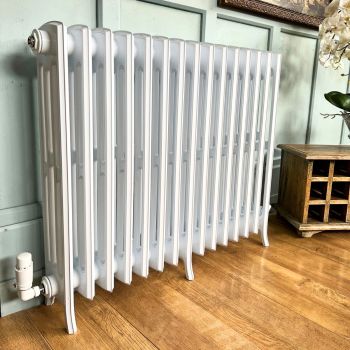
-
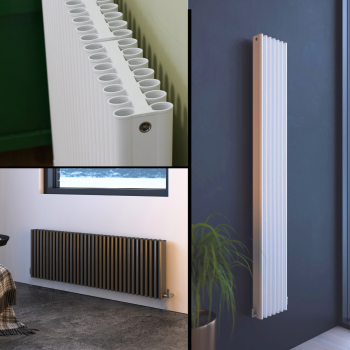
-

-
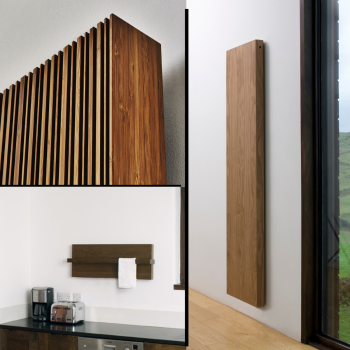
-
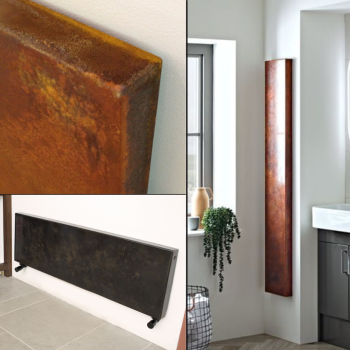
-
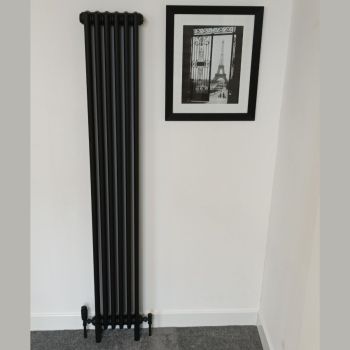
-
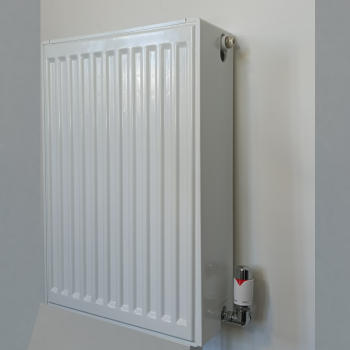
-
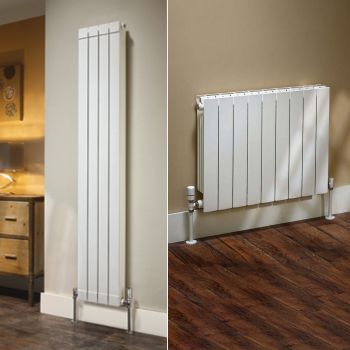
-

-
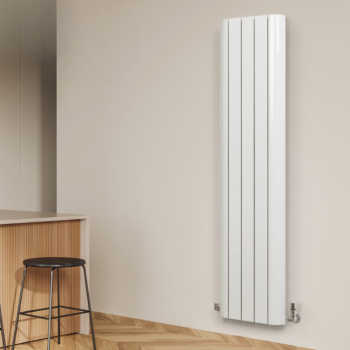
-

-

-
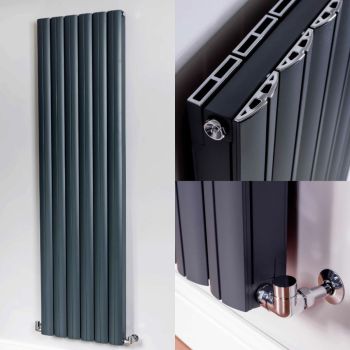
-

-
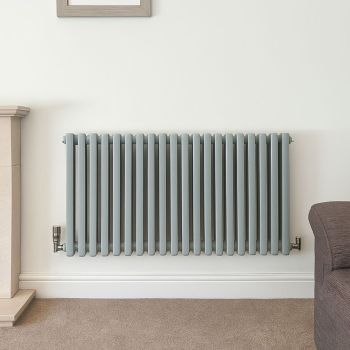
-
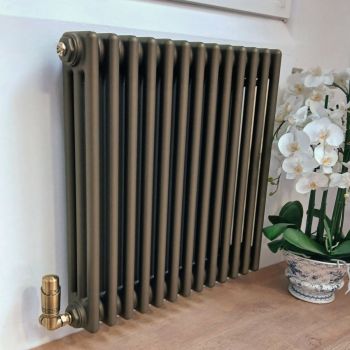 NEXT DAY RADIATORSColumn radiator – Traverse - 300mm, 400mm, 502mm, 602mm & 750mm high - NEXT DAY DELIVERY RADIATORS£211.33In stock
NEXT DAY RADIATORSColumn radiator – Traverse - 300mm, 400mm, 502mm, 602mm & 750mm high - NEXT DAY DELIVERY RADIATORS£211.33In stock
Pros and Cons of different materials
For heat pump systems, the best radiator material depends on whether you’re prioritising fast heat-up, steady output, cost, or longevity — but the winner for most cases is steel or aluminium, with the choice hinging on your system style.
1. Steel Panel Radiators
Pros
- Common, widely available, and affordable.
- Excellent at holding steady low-temperature heat (good thermal mass).
- Easy to get in large, multi-panel, low-temp designs.
Cons
- Slower to heat up than aluminium.
- Heavy if very large.
Best for: Homes where the heat pump runs continuously at low temperature (steady background heat).
2. Aluminium Radiators
Pros
- Very responsive — heats up and cools down quickly.
- Lightweight, easier to handle and mount.
- Often have higher outputs per unit size.
Cons
- Loses heat quickly if the system turns off.
- Can be more expensive.
- Needs good system water quality to avoid corrosion.
Best for: Homes where you want faster warm-up times or where weight is an issue (plasterboard walls, upper floors).
3. Cast Iron Radiators (Not usually ideal for heat pumps)
Pros
- Huge thermal mass — stays warm long after heat source stops.
- Beautiful for period homes.
Cons
- Very slow to respond to changes.
- Physically huge and heavy to size correctly for low temps.
Best for: Aesthetic or heritage installations, not performance efficiency.
Practical tip for heat pumps:
- If you run your heat pump 24/7 at low temperature (the most efficient method), steel is a great match.
- If you do zoned heating with on/off cycles (less common but sometimes necessary), aluminium’s quick response can save energy.
